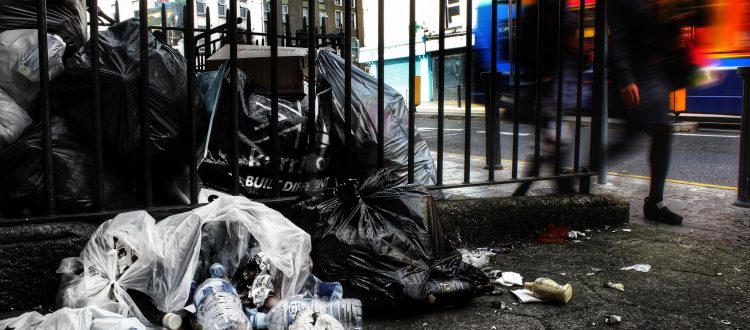The leaders of Pacific Crest Affordable Housing in Bend, Ore., were fairly sure of a couple things. One was that if they provided stable housing for people living in unstable housing — or were homeless or nearing homelessness — people’s health would improve.
They also believed that if housing was provided alongside additional health and wellness help — periodic blood pressure screenings, health fairs and mental health counseling, for example — the residents’ health would improve even more.
In the spring and summer of 2016, Pacific Crest was already building such a place — an apartment complex called Iron Horse Lodge in Prineville, 36 miles from Bend. But as the housing group was putting the finishing touches on the complex and getting set to welcome residents, the group’s leaders needed help. They wanted to be able to assess how and whether their residents were aided by their new housing situation. And they wanted to be able to make smart adjustments along the way.
That’s when they met Erin Solomon, a community research liaison with the OHSU Community Research Hub in Bend, and with the OHSU-PSU School of Public Health, who offered her group’s help. Solomon’s job is to work with community groups and find ways the research hub can help with community projects exactly like Pacific Crest’s.
The Community Research Hub supports an array of experts and trainers who facilitate research and provide technical assistance to communities across the state. The office, led by Jackilen Shannon, Ph.D., a professor at the School of Public Health, is part of the Integrated Program in Community Research, a program within the School of Public Health. The program goals include helping rural communities seek, obtain and use grant-funded research to address regional health issues.
The hub and community research liaisons provide regional expertise while linking researchers from OHSU and the School of Public Health with Oregon communities and organizations embarking on health-related community projects that could use a researcher’s help. The hub supports a team of four liaisons who live and work in different regions of Oregon. The group hopes eventually to add two more liaisons to expand its reach in the state.
In Central Oregon, Pacific Crest leaders had put together a committee of healthcare providers, public agencies and non-profit groups that were helping to imagine how Iron Horse Lodge might work. But the group realized they needed more expertise in health care research — including how to conduct surveys of Iron Horse Lodge residents to assess their health and make ongoing improvements at the housing complex.
“There was no one else they were working with who was able to fill that information gap for them,” Shannon says of Pacific Crest’s interest in research support and survey design. “We were able to step in and give them the tools and the training to get them moving forward.”
Researchers at the Community Research Hub, together with the Oregon Clinical and Translational Research Institute Evaluation Core, helped design a survey for Iron Horse Lodge residents that would allow Pacific Crest to gauge residents’ health and whether and how it was improving over the course of a year. They were also able to design the survey in a way that protected the anonymity of respondents — important for health research — but that also allowed for Pacific Crest to respond quickly to specific residents’ needs if necessary.
“Having people with the expertise to design that survey was something that really appealed to us,” says Ben Bergantz, resident services coordinator for Pacific Crest. “It helped us to feel like we would be doing our best job in terms of identifying what our residents needed and going from there.”
The initial survey was conducted in August 2016 with about 40 percent of Iron Horse Lodge’s 32 residents, Bergantz says. A follow-up survey was conducted with the same respondents in August 2017.
The initial survey helped Pacific Crest identify some health-related needs that the group hadn’t initially considered, Bergantz says — including the possible need for periodic on-site dental care and for counseling groups to help residents with anxiety and depression.
The August 2017 follow-up survey of residents will be especially important — as a scientifically valid assessment of whether and how Iron Horse Lodge is helping its residents. Pacific Crest pulls together funding and grants from a range of agencies and non-profits to help subsidize its affordable rents, Bergantz says. Those agencies and non-profits are, of course, looking for positive results. “So the more evidence there is that this stable housing benefits the lives and the health of our residents, the better,” he says.
The Iron Horse Lodge project is just one of dozens of community-based projects that the OHSU Community Research Hub and the School of Public Health are working on with community organizations throughout Oregon. The Iron Horse Lodge project shows the good work the coalitions can do, Shannon says.
The ideas for the research projects most often come from the communities and community organizations themselves — rather than from researchers, she says. By immersing themselves into the communities, the research hub leaders can help with projects that not only provide great research topics for researchers, but also help the communities.
“Being able to move public health forward, organization by organization, project by project, is really satisfying and fun to be a part of,” says Paige Farris, M.S.W., who, as part of the Community Research Hub, works to protect the rights, welfare and well being of people who participate in research. “Working with Pacific Crest on survey design and implementation makes me feel like I’m making a difference, which I know sounds really geeky. But I do think we change the world in really small ways. It’s been fun to learn about the communities in which I live, and all of the innovative ideas swirling around us.”

